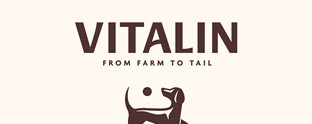Five minutes with Janet Hull and Neil Henderson

The retail industry moves incredibly fast and remaining on top of these changes is a challenge for every retail brand. The World Retail Congress, hosted this week in Madrid, aimed to give the European viewpoint on advertising strategies for the new consumer age.
The conference discussed, among other things, the concept of the ‘Golden Quarter,’ which refers to the dramatic increase in sales during the build up to Christmas. Janet Hull, the IPA’s director of marketing, and Neil Henderson, CEO and owner of St Luke’s, talk about the importance of branding and advertising.
Can you tell us a bit about the session at the retail congress and what you discussed there?
Janet Hull: It may sound a bit strange to be talking about Christmas advertising at this time of year, but this is the time of year when all the big brands are getting ready for Christmas. The conference is a good way to present the UK credentials to a global audience. What we were looking to achieve was to show them a contrasting picture between a high street retailer, John Lewis, and an online retailer like Very, highlighting that the same brand storytelling was equally important for both.
What do you take into consideration when you begin to come up with ideas for a brand campaign?
Neil Henderson: There’s quite a few things. Obviously you’re trying to create something that is long-term, so it has to be based primarily on a human need of some kind. You need to have an understanding on what is going on in the audiences and make sure that it has a unique insight and that it’s different from other brands. What is it about the product or the brand that is different, what its real benefit is and what the story of the company behind it is. It takes all of those things together to create a really powerful brand platform.
How do campaigns like those during the Christmas period align the advertising with the corporate brand?
NH: When Christmas comes along, the mindset of consumers is so different. There is a bit more abandon and they want to spend money. The advertising and communications have to reflect that. Often brands go off on a tangent and do something that has nothing to do with the stuff they do the rest of the year. The challenge to get it right is you have to understand your audience’s take on Christmas, not everyone thinks the same thing, and then have the brand deliver that.
There are a number of outlets and formats for advertising campaigns. What is in your opinion the most effective one? Has it changes over the years?
NH: Yes, it certainly has changed. Each channel has different purposes. Television and cinema, and specifically Christmas television and cinema, has always been and remains the primary medium at Christmas, because Christmas is all about the emotion. People want to get swept away by powerful feelings and television and cinema delivers that.
The biggest difference is that there are so many platforms now and you have to activate them all, you can’t just pick one ore two. If you have the budget to do it, you need to have a strong presence with lots of channels and you have to make the story work across all channels.
What makes a campaign successful and sets it apart from the others?
NH: What makes it really work, is branding. Recognising what the brand really is. Especially at Christmas, there’s a real danger because you fill the ads with pictures of Santa, pictures of Christmas trees and fairy lights and you look like everyone else’s ad. It’s incredibly important that you own the communications. In Very, we create a recognisable graphics that people recognise across every single platform. For example, our pink cube logo, which we’ve had for years, at Christmas, it becomes a gift box while remaining recognisable to the public.
How do you balance your desire to be creative with your desire to be commercial?
NH: They’re both one of the same thing. Humans love to be entertained. If you can entertain them, they will give you their time, they will give you their affection and they will give you their business. So, being creative is a composition that you enjoy having with people and now, it is great that we get the feedback the social media allows us to see their reaction, their response, how much they love it, how much they’re talking about it.
What is the biggest challenge one faces when trying to create a campaign and what risks do you have to take?
NH: The biggest challenge is coming up with the story, a piece of creative that genuinely moves people. It is very easy to create 30 seconds of moving image that is meaningless, but to create a character that for two seconds people care about, a joke that actually makes people laugh, is immensely difficult. Storytelling is a big challenge.
The risk is that you have to go out and spend a lot of money making these things. We try and reduce the risk by researching everything, but at the end of the day, you’ve got to get behind it, you’ve got to believe in it.
For more from Transform magazine, follow us on Twitter @Transformsays












